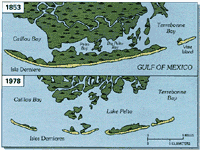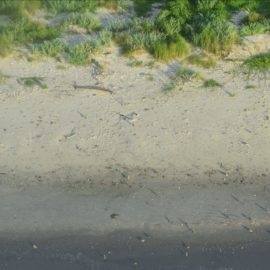
Bob Marshal is optimistic on saving the coast but there are worrying actions that still pop up.
Columnists always look for events that can summarize complex answers to critical questions on the subjects they cover. In my case the question is always: “Can Louisiana save its coastal zone?” I ended 2021 by admitting I was cautiously pessimistic about our chances. The pessimism was based on the growing science showing failures to reduce the emissions driving the sea level rise that will swamp our bottom third in the decades ahead, and residents’ constant reelection of politicians blocking emissions-reducing policies. But I was holding out a sliver of hope that the state’s ambitious coastal master plan and a better Congress could help at least delay, if not avoid, the disaster. And now 2022 has ended with two events that crystallize the reasons for that opinion.
nola.com
The first event is the Mid-Barataria Diversion.
That sliver of hope was renewed because last month the Army Corps of Engineers gave final authorization for the $2.5 billion Mid-Barataria sediment diversion. If all goes well — if the computer models are accurate and the project survives court challenges — within eight years we could begin using the river to rebuild about 21 square miles of wetlands by 2070. But make no mistake: This is a huge gamble, because no one has ever built a controlled river sediment diversion. Yes, we know much smaller diversions using river water to reduce salinities have resulted and some land building near their outflows. But this project is on much larger scale and with much grander goals. We are putting our faith in science and engineering that the outcome will be as computer models predict. And we know it will have significant adverse impacts on current fisheries, fishing industries and flood protection. That’s why the budget includes $360 million in mitigation costs for those affected. Finally, we will be taking a $2.5 billion gamble on the world finally reducing emissions enough that the record acceleration in sea level rise will be slowed. It can’t be stopped; the National Oceanic and Atmospheric Administration already predicted the combination of our subsidence with climate-caused sea level rise could put an extra two feet of the Gulf along our coast by 2050. But slowing it gives future generations a chance. Yet it’s a gamble we must take. River sediment diversions are the only affordable way to keep up with a moderate amount of sea level rise in the decades ahead. They can’t protect the entire coast; we will definitely lose a lot of current wetlands, and even some communities. But, if emissions are reduced, they can deliver enough new mud in specific areas to match the rise in storm surge as well as build storm protection and fisheries habitats.
The second event is not a good one as we keep electing representatives who don’t take climate change seriously.
The second event last month perfectly crystallized another reason for my pessimism: The same members of Congress who consistently oppose regulations to protect emitting industries trumpeted their votes for two bills that will bring billions of dollars to protect Louisiana coastal residents from the impacts of those emissions. One bill builds or raises floodwalls and levees and raises houses now vulnerable to hurricane storms surge and extreme rainfalls. Of course, each of those problems is increasing because emissions are warming the Gulf of Mexico, causing larger storms with higher surge reaching further inland and heavier rains. The other bill helps mitigate the damage done by the Mississippi River Gulf Outlet. But anything built there will be submerged in a few decades if emissions causing sea level rise are not reduced. Yet U.S. Reps. Steve Scalise, Garret Graves and others taking credit for this needed help joined all other Republican House members in voting against the Biden administration bill that will now send billons in grants encouraging industries and states in the race for reducing emissions. The unavoidable truth is that we can’t save our coastal communities and industries without reducing emissions. It’s a simple as that. And until the people living here send that message to the people working for them in Baton Rouge and Washington, no one should be optimistic about our long-term future on this coast.
Sadly he is right, we need a unified approach and we do. not have it.



